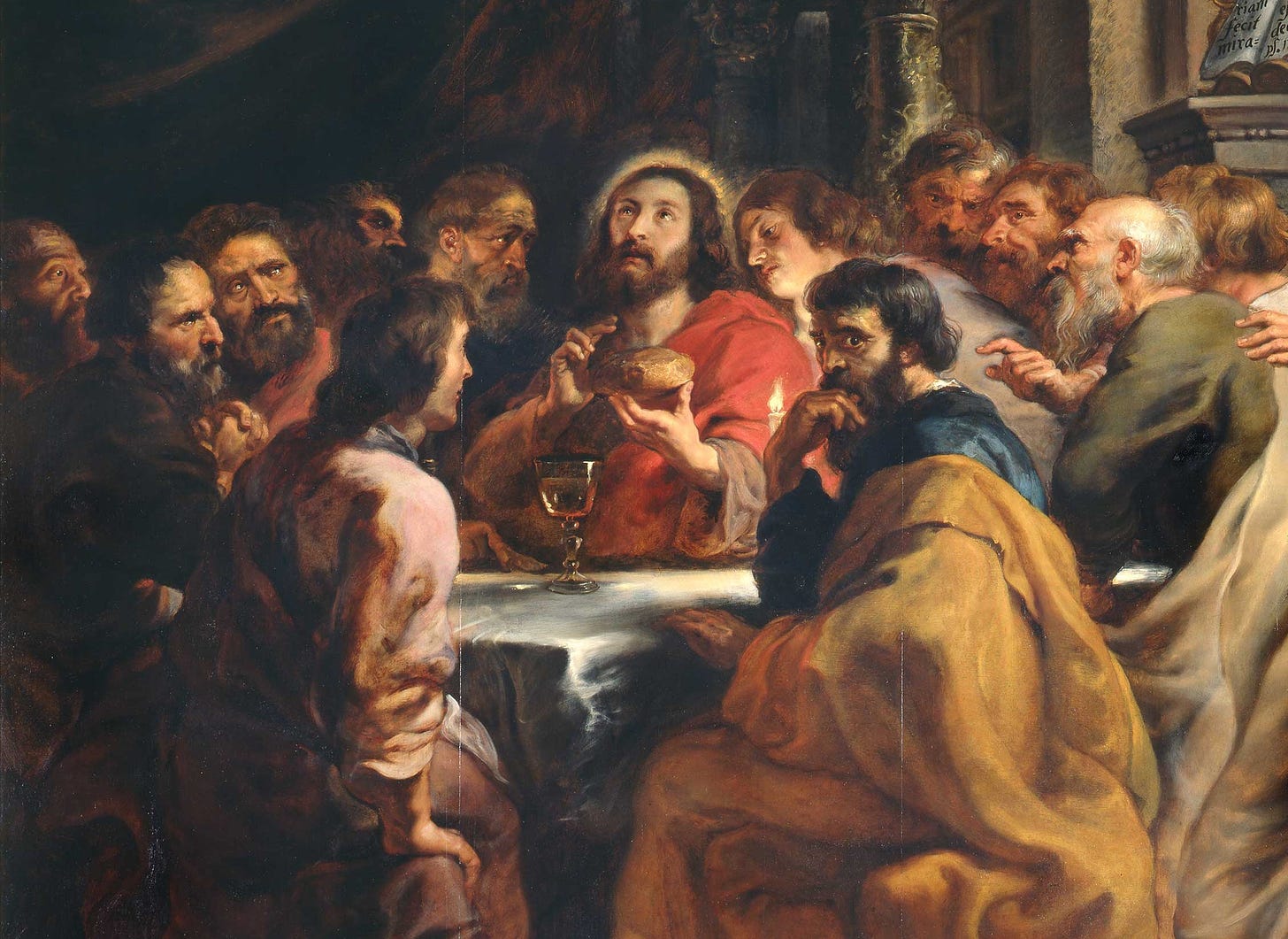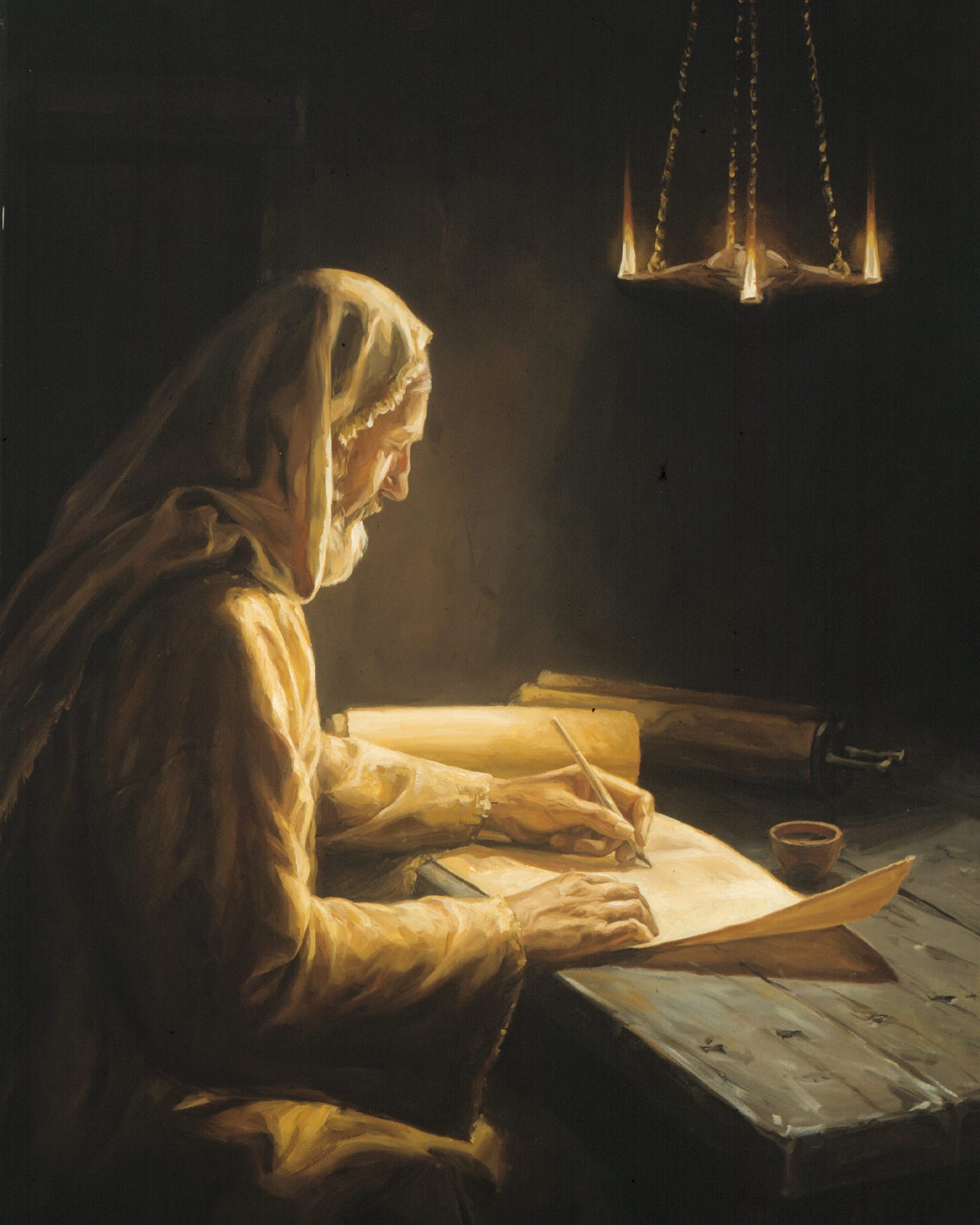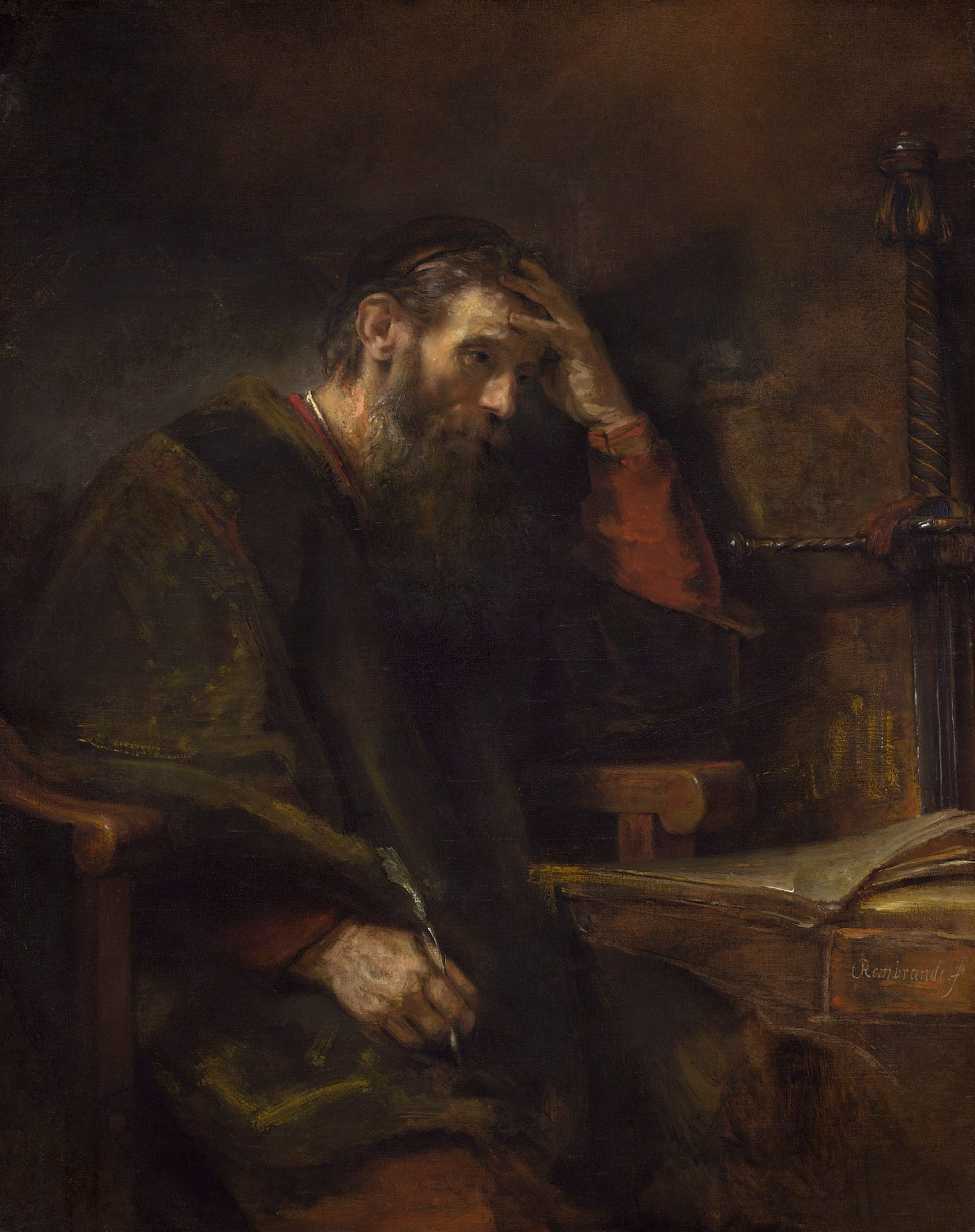Although the gospels make clear references to the Passover and the Feast of Unleavened Bread prior to, and during, the Last Supper taking place (Matthew 26, Mark 14, Luke 22), some believe that the Last Supper was not a Passover meal, presenting the following as evidence;
In the gospel accounts the bread, and not the lamb, is referenced regarding Jesus’ forthcoming sacrifice, and further that there is no reference at all to a lamb being eaten.
The bread is called ἄρτος/ artos (bread) and not ἄζυμος/ azumos (unleavened bread) in the Synoptic gospels.
John’s gospel implies the Last Supper took place the day prior to the Passover.
The last supper could not have taken place on Nisan 14 as there are several accounts of Jewish legal breaches taking place on the following day (the first day of Unleavened Bread). For example, Simon of Cyrene coming in from working in the field.
As these specific points have been addressed elsewhere (see Köstenberger, 2010) what I plan to do here instead is to demonstrate that the Last Supper was, in fact, a Passover meal by comparing it to early Passover practices. I will then explain why this is important.
Before their flight from Egypt, Exodus chapter 12 recounts the instructions given by Yahweh through Moses to the children of Israel concerning the Passover (חג הפסח/ Hhag HaPesaHh) and the Feast of Unleavened Bread (חג המצות/ Hhag HaMatzot):
A lamb should be slaughtered on the fourteenth day of Nissan (the first month of the Jewish calendar).
The blood was to be put on the doorposts and lintel.
The lamb to be slain must be a male, without defect, in its first year.
The lamb must be roasted by fire and any that was left over should be burned.
It was to be eaten “in haste” - wearing sandals and with staff in hand.
The lamb should be eaten with unleavened bread (Matzah) and bitter herbs (Maror).
Unleavened bread should be eaten for seven days (until the 21st day of Nisan).
On the first day, all yeast must be removed from people’s houses.
It should be an occasion of remembrance/ a memorial.
Today, the Passover is still practiced every year by Jews. The order of which (the Seder) is detailed in a book called the Haggadah, which outlines the Passover Seder practice that consists of:
The drinking of several cups of wine throughout the meal. Including one whilst reclining.
The ritual washing of hands at certain points.
Several blessings recited throughout.
An appetiser consisting of dipping a small piece of a vegetable (like parsley) in salt water.
The symbolic breaking of unleavened bread (Matzah).
Eating the bitter herbs (Maror).
Reciting the story of the Passover.
The singing of Psalms.
There are, therefore, several additions in the modern Judaic practice when compared to the original Exodus instruction. Also, notably, there is no lamb (at least in the majority of practices) as after the destruction of the Second Temple it was uncommon to eat lamb as there was no place for the sacrifice.
The question is, therefore, what did the Passover Seder look like at the time of the Last Supper? The earliest extant version of the Haggadah is dated to the third century (Marcus, 2013). It specifies the drinking of four cups of wine at various points in the meal, a reading (from the Haggadah), eating Matzah and bitter herbs, and a recitation of the Hallel (Psalms 115-118), finally followed by the Afikoman, the last act of ceremonially eating the bread (Marcus, 2013). There are also glimpses of Passover practice from even earlier sources; within second temple literature, the Book of Jubilees for example, dated to at least the first century BC, clearly identifies that the practice of drinking wine was already a custom (Tabory, 2008). Additionally, the Wisdom of Solomon, dated to the beginning of the first century AD (Tabory, 2008) references the singing of songs of praise. Furthermore, there is also evidence that Greco-Roman influence upon the Jewish custom also saw the introduction of reclining whilst drinking some of the cups of wine (Tabory, 2008).
We are, therefore, presented with the following as Passover Seder practices at the time that the Last Supper took place:
Reciting of text(s) that explain the significance of the different parts of the meal, specifically as an occasion of remembrance.
Eating of the Passover lamb.
Eating bitter herbs.
Eating unleavened bread.
Drinking cups of wine.
Sitting in a reclined position at some point during the meal.
The singing of psalms.
Those familiar with the gospel accounts of the last supper will see the majority of these components present.
The following is from Matthew 26:20 (LEB), Luke 22:19-20 (LEB), and Matthew 26:30 (HCSB).
“And when it was evening, he was reclining at [the] table with the twelve disciples.”
“And he took bread, and after giving thanks, he broke it and gave it to them, saying, “This is my body which is given for you. Do this in remembrance of me.” And in the same way, the cup after they had eaten, saying, “This cup is the new covenant in my blood which is poured out for you.””
“After singing psalms, they went out to the Mount of Olives.”
What we are presented with, therefore, is a clear record of an early first-century Passover Seder. In fact (after Exodus chapter 12) the Last Supper is the oldest ever record of a Passover Seder (Dr Erez Soref, 2022). Furthermore, Jewish scholar Professor Israel Yuval suggests that the Jewish Passover Haggadah (the readings and order) was actually created as a response to the Christian Last Supper narrative, suggesting that “in the generation following the destruction [of the temple], Christian-Jews "told" their story of redemption by reading the Gospel. The Passover Haggadah is thus a Jewish "counter-Gospel"-one story opposite another, one Haggadah opposite another” (Yuval, 1999, p.114-115).
So, why is this question important?
(1) Because Jesus fulfils the Passover.
Some, in their attempt to dismiss the claim that Jesus is the Jewish Messiah have rejected the theology that the Messiah would be considered a new Passover lamb, stating that the Passover lamb was not actually a sacrifice for sin (Dr Seth Postell). This is based on the understanding that the Passover lamb is a Zevachim sacrifice which is not a sacrifice for sin by Levitical standards but is instead a sacrifice that signifies the communion between God and man (Lauterbach, 2021). What this narrow view fails to recognise is that the entirety of the Levitical sacrificial system was a foreshadowing of the coming Messiah.
Furthermore, it is clear that the prophets use Exodus language in anticipation of a future Passover event; for example, the splitting of the Mount of Olives to make a way for God’s people in Zechariah 14, is similar to how the Red Sea was split in Exodus 14. (Postell, 2022).
The culmination of Exodus and Passover imagery in the prophets is found in Isaiah chapter 53 which not only speaks of the need for communion between God and man but also clearly casts the future Passover lamb as a sin sacrifice;
“All of us have wandered about like sheep; we each have turned to his own way; and Yahweh let fall on him the iniquity of us all. He was oppressed and afflicted, yet he did not open his mouth; he was brought like a lamb to the slaughter, and like a sheep is dumb before its shearers, so he did not open his mouth.” Isaiah 53:6-7 (LEB).
(2) Because Jesus fulfils the Feast of Unleavened Bread.
As well as being symbolic of the physical body of the Messiah, the (unleavened) bread also symbolises that believers are part of his spiritual body. The apostle Paul clearly viewed Holy Communion as an act of spiritual partnership. He knew that by the blood of the lamb, the children of Israel had been distinguished from the Egyptians as covenant partners.
In 1 Corinthians 10 Paul frequently uses the Greek word κοινωνία/ koinónia which is often translated as fellowship, participation or communion, as it means an individual or collective union. In the passage below, from 1 Corinthians 10:14-21 (HCSB), I have translated this word as ‘uniting partnership’ to emphasise how Paul related this concept to Holy Communion;
“Therefore, my dear friends, flee from idolatry. I am speaking as to wise people. Judge for yourselves what I say. The cup of blessing that we give thanks for, is it not a uniting partnership (κοινωνία/ koinōnia) in the blood of Christ? The bread that we break, is it not a uniting partnership (κοινωνία/ koinōnia) in the body of Christ? Because there is one bread, we who are many are one body, for all of us share that one bread. Look at the people of Israel. Do not those who eat the sacrifices enter into a uniting partnership (κοινωνοὶ/ koinōnoi) in what is offered on the altar? What am I saying then? That food offered to idols is anything, or that an idol is anything? No, but I do say that what they sacrifice, they sacrifice to demons and not to God. I do not want you to have a uniting partnership (κοινωνός/ koinónos) with demons! You cannot drink the cup of the Lord and the cup of demons. You cannot share in the Lord’s table and the table of demons.”
There is clearly an exclusivity clause in this spiritual partnership. A person is either partnered with Yahweh or the prince of the power of the air (Ephesians 2:2); as it was on the night of the Passover that Yahweh executed judgement against all the gods of Egypt (Exodus 12:12), and it was on the night of the Passover that the adversary, or the Satan, entered into Judas, specifically when he ate the bread (John 13:27).
Paul uses imagery of the Passover, the Feast of Unleavened Bread and Holy Communion interchangeably. He also uses the bread as a symbol of unity in the body, as the traditional custom was to have one piece of bread which was to be shared (Dr Ralph F. Wilson). Paul clearly understood how the bread present at Holy Communion represented a unified body of believers and that this was only possible because that body was once broken for them, (as Jesus had said at the Last Supper) - that the only way to have people enter into this unified body of believers, was because of the willing sacrifice by the lamb of God.
Reference List
Köstenberger, A.J., 2010. Was the Last Supper a Passover Meal? The Lord’s Supper: Remembering and Proclaiming Christ until He Comes, pp.6-30.
Lauterbach, J. Z., 2021. Passover Sacrifice. Available at: https://www.jewishencyclopedia.com/contribs/176 (Accessed: 05 April 2023).
Marcus, J., 2013. Passover and Last Supper Revisited. New Test. Stud. 59, pp. 303–324.
Postell, S., One For Israel Ministries, 2022. SHOCKING exposé! Israeli professors unveil secrets of the Passover seder. Available at: https://www.youtube.com/watch?v=dnopIIdqnzY&t=1945s (Accessed: 01 March 2023).
Soref, E., One For Israel Ministries, 2022. SHOCKING exposé! Israeli professors unveil secrets of the Passover seder. Available at: https://www.youtube.com/watch?v=dnopIIdqnzY&t=1945s (Accessed: 01 March 2023).
Tabory, J., 2008. The JPS Commentary on the Haggadah: Historical Introduction, Translation, and Commentary. Jewish Publication Society: Philadelphia.
Yuval, I.J., 1999. Easter and Passover as early Jewish-Christian dialogue. Passover and Easter: Origin and history to modern times, pp.98-124.









Great read. And well sourced. Thank you for writing this.